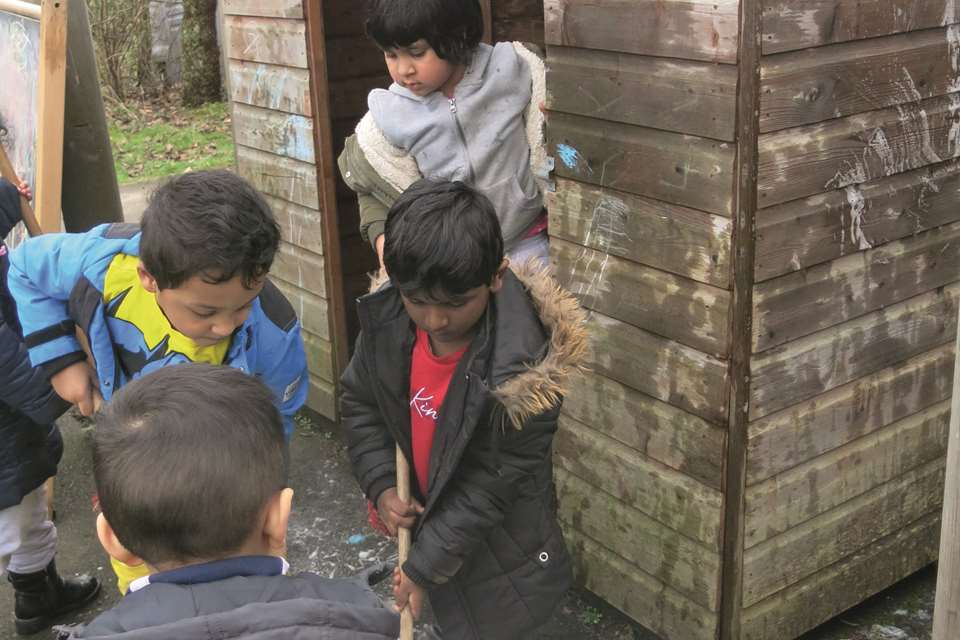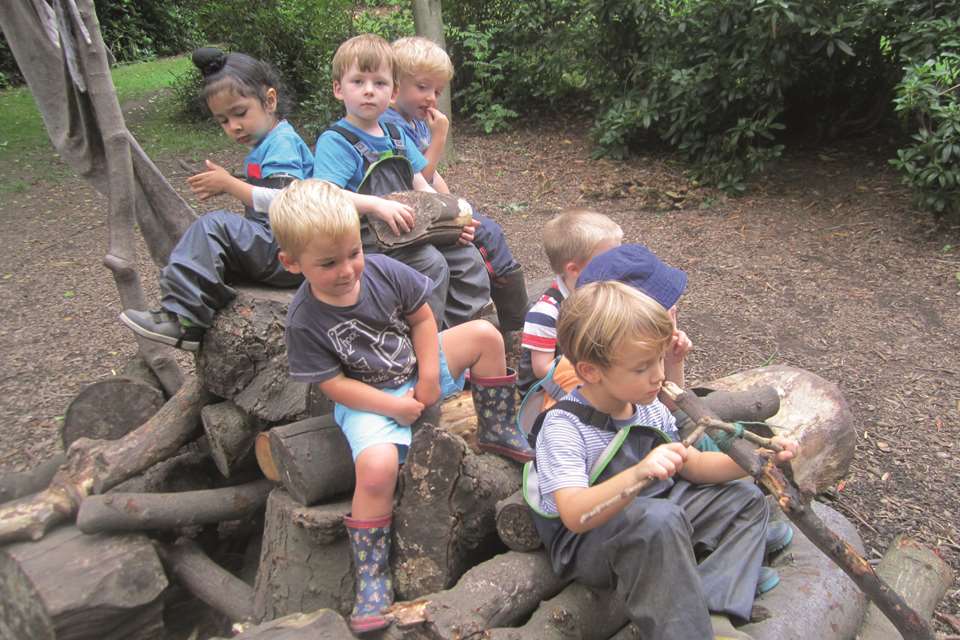EYFS Activities - We’ve explored… wunderkabinett
By Annette Rawstrone
Wednesday, September 1, 2021
How one setting’s introduction of a traditional cabinet of curiosities has supported children’s explorations of the natural world around them. By Annette Rawstrone
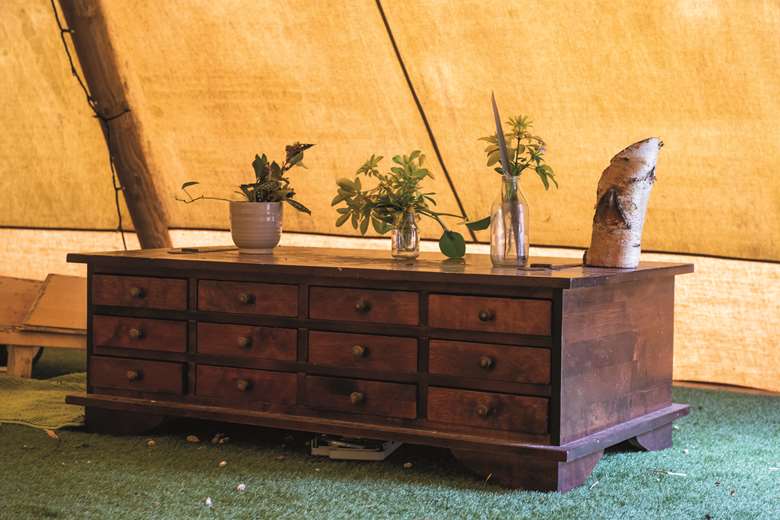
An enticing wooden apothecary-style cabinet with lots of little drawers perfect for storing children’s gathered treasures is sparking greater exploration and conversations at Back to the Garden Childcare in Altrincham, Greater Manchester.
The nursery, which is committed to a natural approach based on spending as much time as possible within nature, has recently introduced the fantastically named wunderkabinett into a tepee in its newly designed outdoor area.
Artist Sian Kellaway helped to develop the outdoor classroom and came up with the idea of introducing a ‘cabinet of curiosities’ inspired by those which started to emerge in the 16th Century and are thought to be the precursor of museums. Ms Kellaway sourced the cabinet online and it has become a favourite place for children to store their own intriguing natural items and for practitioners to gather loose-parts collections of sticks, logs, pebbles and pipes.
‘SPECIAL IN ITSELF’
‘Allowing children to be children to explore their environment, experiment with the outdoor playscape and harness their imaginations allows for a natural approach where each child develops at their own pace,’ says curriculum and training development consultant Anne Statham.
‘The tepee is positioned in a space that links the wild natural area with the more ordered nursery garden. We wanted to have somewhere for children to house the treasures that they find and bring into the setting or gather on walks, those little things that are special to children and they love putting in their pockets. These items are part memento – a sort of souvenir of where they have been – and objects that they want to explore further.
‘The wunderkabinett is a solid and sturdy “grown-up” piece of furniture, which makes it look special in itself. The small drawers in it are perfect for storing small objects so that they can return to them later or keep them safe until they take them home.’ Although, she adds, one girl wanted to put a snail into a drawer, which led to a conversation about how best to care for living creatures.
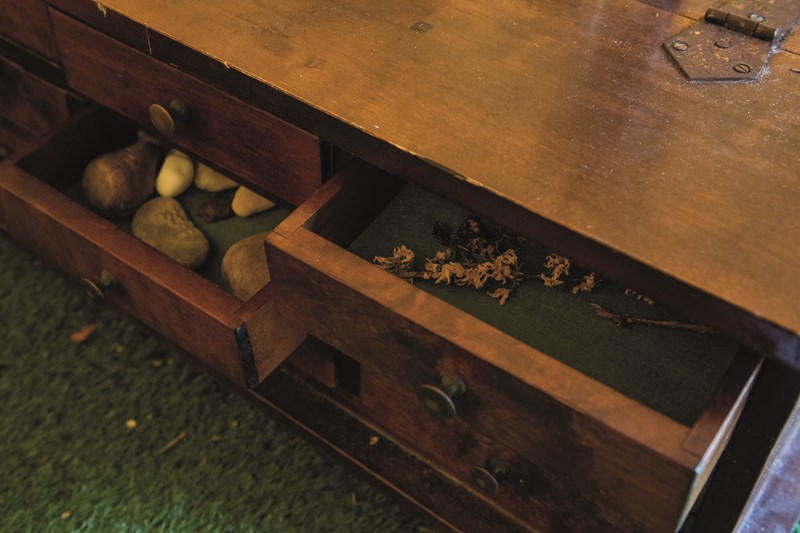
OPENING DRAWERS
Deputy manager Zoe Bowring says they take lots of photographs of their explorations in nature but children also like to keep small objects which are not only visual reminders but tactile ones too. Along with the drawers, there is a canvas screen for children to clip leaves, grasses and other objects at their height.
Practitioners like to capture the sounds of the places they visit and record the children’s voices to play back to them. This is done in the tepee alongside the wunderkabinett, with images projected onto a screen.
‘We wanted to have a more sensory experience so that even the babies can go into the tepee and see and listen to the murmurations of starlings,’ says Ms Bowring. ‘The wunderkabinett appeals to babies’ stage of development where they enjoy opening drawers, taking things out and putting them back.’
WONDER AND EXCITEMENT
The wunderkabinett supports children to revisit objects that they are interested in and extend their learning of them, such as a bird egg. ‘It led the children to ask how a bird came out of something so small and they wondered where it is now,’ says Ms Statham. ‘We can extend this interest by talking about hatching or linking to the eggs that we buy in the supermarket – why do these eggs not hatch into a bird? We have shown them different eggs, such as quails eggs and hard-boiled eggs that we can peel and eat. It makes the connection with nature and the food that they eat.’
Along with the objects that children enjoy storing in the wunderkabinett, practitioners also put in provocations. Different objects can lead to excited conversations and children constructing stories around them, which supports communication and language acquisition.
Practitioners have found that when children return to their found objects, they often like to tell stories around them, such as a collection of shells that led to conversations around going to the beach.
A pile of partridge feathers discovered on a walk inspired discussions around whether a fox had caught the bird. A lot of conversation about the poor bird ensued, but also that the fox may have needed food for its family.
‘There is wonder and excitement as a child opens a drawer because they don’t know what they are going to find,’ says Ms Bowring. ‘One day we put some flowers in the drawers and it provoked the children to look at them and talk about the flowers that they have at home. This then extended into them talking about different types of flowers and where they can find them. They then wanted to look at the flowers more closely and draw them. It captured their imaginations much more than I expected.’
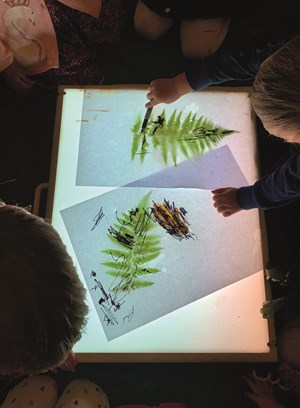
VERY CURIOUS
Children are often very passionate about showing practitioners what they have found. ‘They will often want to know what things are,’ says Ms Bowring. ‘We may not know exactly what they have found, but we can share that learning journey with them. The children can see that we are learning as well, which is powerful. Children can ask us what a piece of rock or stone is and we can try to find out together by looking at reference books and online.’
Ms Bowring adds that they use technology to investigate things further because it is now such a big part of daily life. ‘We ask what search words children would like to put in or what they want to look at so they are involved in the research process on the iPads,’ she explains.
The tepee is also resourced with magnifying glasses, a lightbox, reference books, story books linked to nature, clip boards and art materials to support children as they examine, explore and find out more about the natural objects they have gathered.
Recently, children have enjoyed collecting flower buds and peeling their layers to look at what is inside. ‘It’s a real sensory experience as well as them finding out about the structure of the bud,’ explains Ms Statham. They also enjoy collecting plants with furry seed heads, which they like blowing or carefully storing in the wunderkabinett alongside the egg shells and other curiosities.
BOOK CORNER
 The Lost Words by Jackie Morris and Robert Macfarlane
The Lost Words by Jackie Morris and Robert Macfarlane
A beautiful celebration of words and nature with acrostic poems that lodge into your memory easier than plain facts.
 The Wonders of Nature by Ben Hoare
The Wonders of Nature by Ben Hoare
Find out how the dragon blood tree got its name, why a sundew means big trouble for insects and what on earth a radiolarian is.
 Nature Trail by Benjamin Zephaniah and Nila Aye
Nature Trail by Benjamin Zephaniah and Nila Aye
This joyful celebration of nature reminds us all to take a closer look at the world around us. Packed with animals and minibeasts alongside imaginative rhyming text.
 Funny Bums, Freaky Beaks and other incredible creature features by Alex Morss, Sean Taylor and Sarah Edmonds
Funny Bums, Freaky Beaks and other incredible creature features by Alex Morss, Sean Taylor and Sarah Edmonds
A fun compendium of all the most unusual and unexpected features in the animal kingdom.
 A First Book of Nature by Nicola Davies and Mark Hearld
A First Book of Nature by Nicola Davies and Mark Hearld
From beachcombing to stargazing, watching squirrels, ducks and worms to making berry crumble or a winter bird feast, this book is part poetry, part scrapbook of facts.
 The Tiny Seed by Eric Carle
The Tiny Seed by Eric Carle
The story of how a tiny seed travels from its parent plant before finally finding a place to settle and grow into a beautiful flower.
 First Facts Bugs by DK
First Facts Bugs by DK
Find out about the incredible world of creepy crawlies. Discover why bees make honey and how ants work as a team. Then see how they help to keep our planet healthy.
Download Now

